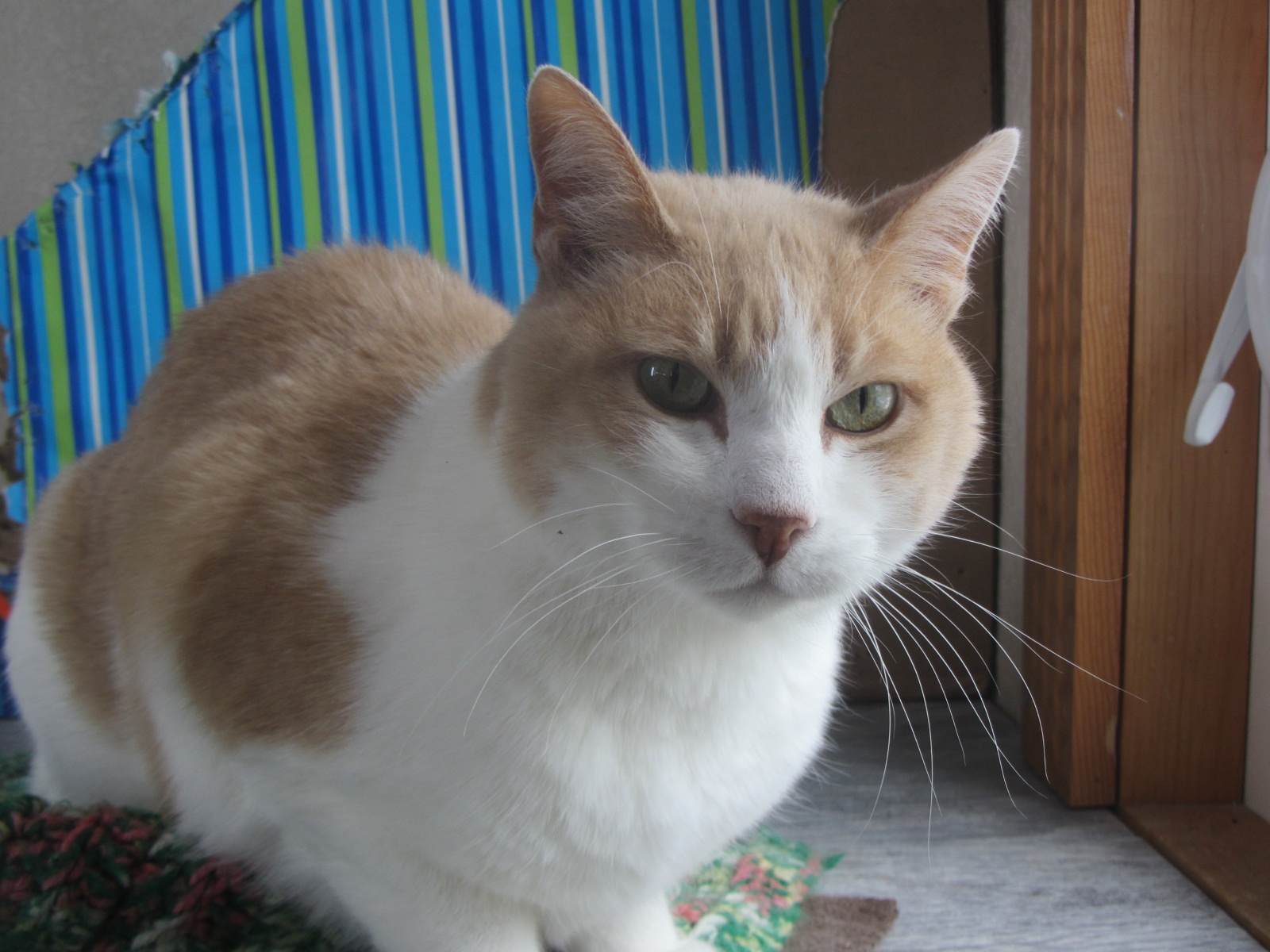
24 May Second Chance: Children & Pet Loss
My name is Sunny and I am a sweet 11-year-young cat here at the Second Chance Shelter.
For this week’s Pet Column I will be discussing how to help children cope with the loss of a pet. This is an important topic for any family and so involved that I will not be able to cover the entire subject in one Pet Column, but let’s get started…

Sunny
Death and dying can be two of the hardest realities of life to explain to children. Very often, the death of a family pet is a child’s first encounter with this immutable law of nature. How this event is handled can have a far-reaching impact on a child’s understanding.
A child’s level of understanding of death depends on his or her age. Older children can grasp the finality of death, while younger children often view their relationship with a pet as indefinite. Marty Tously, a bereavement counselor and author of Children and Pet Loss: A Guide for Helping states that, “At all ages, honesty is the best policy. That means using the words death and dying, and explaining the permanence of death. You do it gently but without confusing what dying actually means.”
Tously also states that a child’s ability to understand what death means depends on his/her emotional and cognitive development.
She has outlined the generally understood guideline of how children perceive death and dying:
Under 2: A child can feel and respond to a pet’s death, based on the reaction of those around him or her. A child picks up the stress felt by family members, no matter what the cause.
2 to 5: The child will miss the animal as a playmate, but not necessarily as a love object. They will see death as a temporary state – something like the way leaves fall off a tree in fall, but grow back in the spring. They may react to the trauma around them through regression, such as thumb-sucking or temper tantrums.
5 to 9: Children begin to perceive death as permanent, but they may indulge in “magical thinking,” believing that death can be defied or bargained with. This is also the period when children recognize a correlation between what they think and what happens. Parents need to assure children that they did not cause the pet’s death – nor can they reverse it.
10 and up: Children generally understand that all living things will eventually die. Understanding and accepting are two different things, however. They may cycle through the normal stages of grief that grownups do: denial, bargaining, anger, guilt, depression and acceptance. Or they may react in other ways such as withdrawing from friends and family or becoming disinterested in their normal activities.
Children may also react by fearing abandonment, reasoning that if a pet can die, then their parents could die as well. They often become intensely curious about death and what happens to the body. They may ask for details that you may find uncomfortable to explain. These are questions you should answer in a straightforward, gentle, and careful manner.
The follow up column on this topic will detail the recommended ways to explain the death of your pet – as certain approaches can have very negative repercussions.
Now back to me – don’t let this topic fool you – I am totally healthy and not planning on dying anytime soon. I am timid when I first meet people, but I love human contact and petting. Come meet me or my friend Kittie today…

Kittie
Kittie is a sweet mini-Aussie with a “full figure,” weighing about 30 pounds. She is about three-years-old and came from a puppy mill rescue. Kittie is extremely affectionate toward humans, kids and other dogs. She enjoys crawling in your lap and spending a lot of time with you. She enjoys the company of other dogs and would make a great snuggly family dog
Editor’s note: It’s no secret. The Telluride region is dog heaven. Well, pet heaven. Unless you are one of our furry friends who gets caught in the maw of neglect and abuse. Then heaven is on hold until Second Chance Humane Society comes to the rescue. Second Chance is the region’s nonprofit dedicated to saving animals’ lives and promoting responsible pet parenting and human-animal bond. In her weekly blog, executive director Kelly Goodin profiles at least one, generally two of the many animals now living at the no-kill shelter, Angel Ridge Shelter, a dog and a cat, hoping to find them loving permanent homes. The column is sponsored by Ted Hoff of Cottonwood Ranch & Kennel, who from time to time exercises his skills as a dog whisperer, partnering with Kelly and her staff to help train a particularly challenging animal.

Ted Hoff & Magnificent Mae
By the by, there is no better place to park your pup or get your pup (or adult dog) trained than Cottonwood whenever you head out of town (for locals) or are heading to town and staying somewhere that does not allow pets. Consider joining Ted’s Very Important Dog (VID) Club for added benies. (Details on Ted’s website.)
Second Chance Humane Society Animal Resource Center and Thrift Shop are both located in Ridgway, but service San Miguel, Ouray & Montrose Counties. Call the SCHS Helpline at 626-2273 to report a lost pet, learn about adopting a homeless pet, or about the SCHS Spay/Neuter, Volunteer, Feral Cat, or other Programs. View the shelter pets and services online: www.adoptmountainpets.org
Vetting the Vet: Dr. Michelle Dally, DVM, J.D. is Medical Director of Second Chance Humane Society. She also has a private practice, Dally Veterinary Medicine, 333 S. Elizabeth Street, Ridgway, Colorado. Her service area is San Miguel Mesas, Placerville, Ridgway, Ouray, and Montrose. For more on Dr. Dally, go here.

Michelle & Wallowby


Sorry, the comment form is closed at this time.